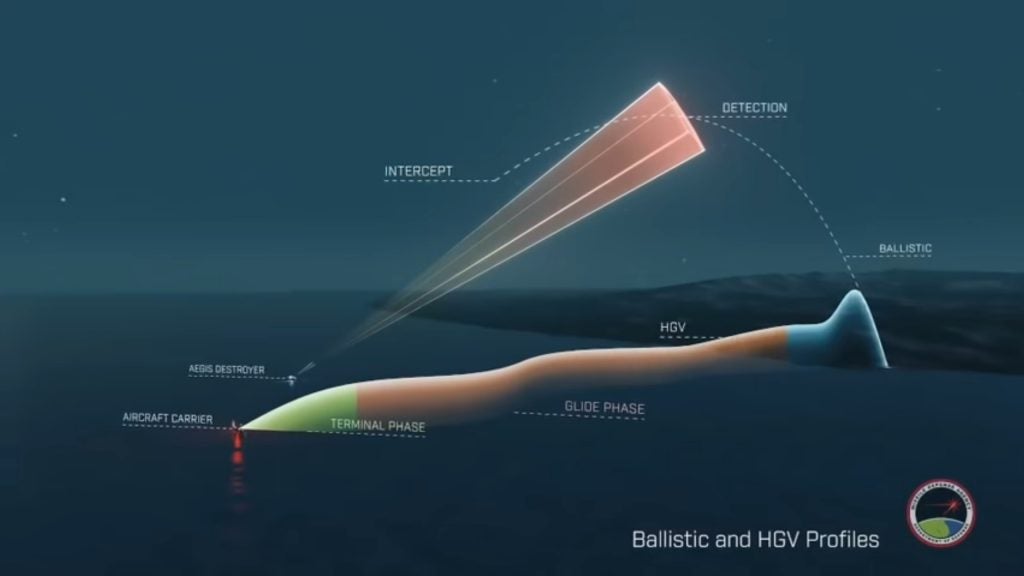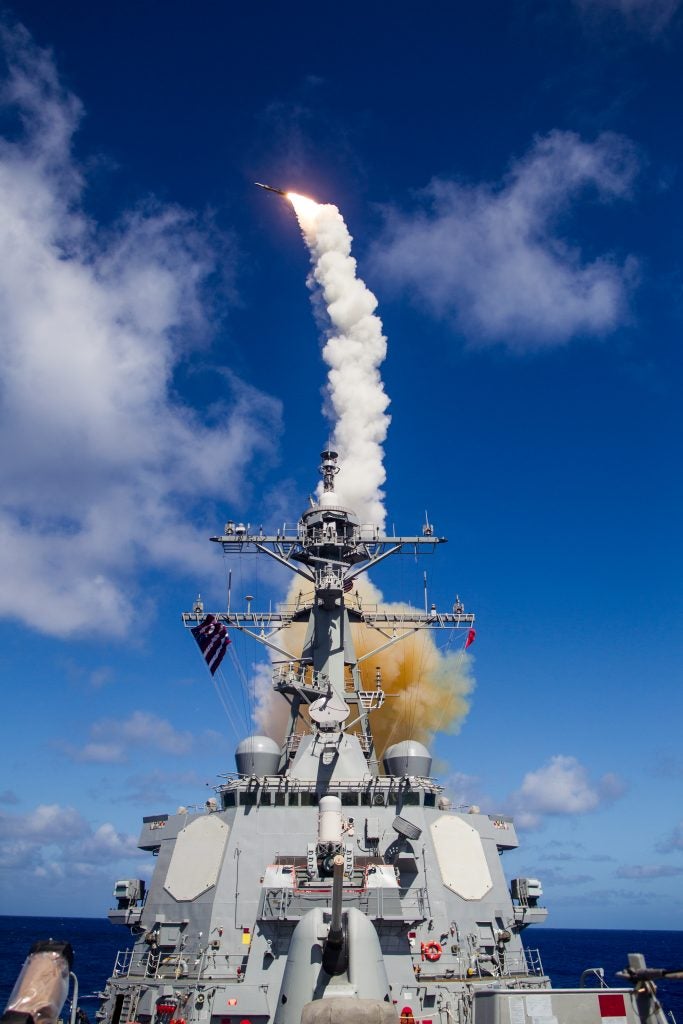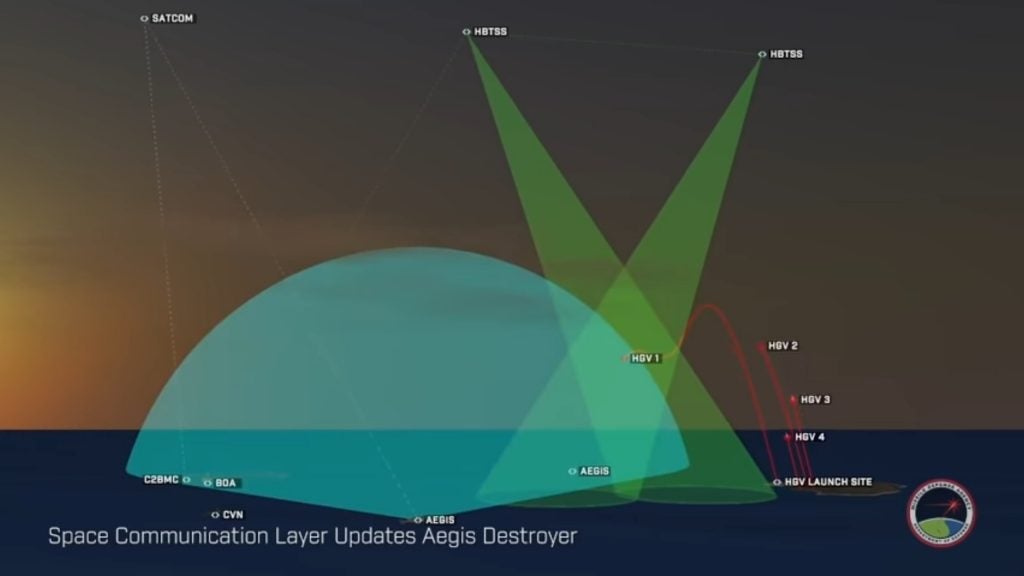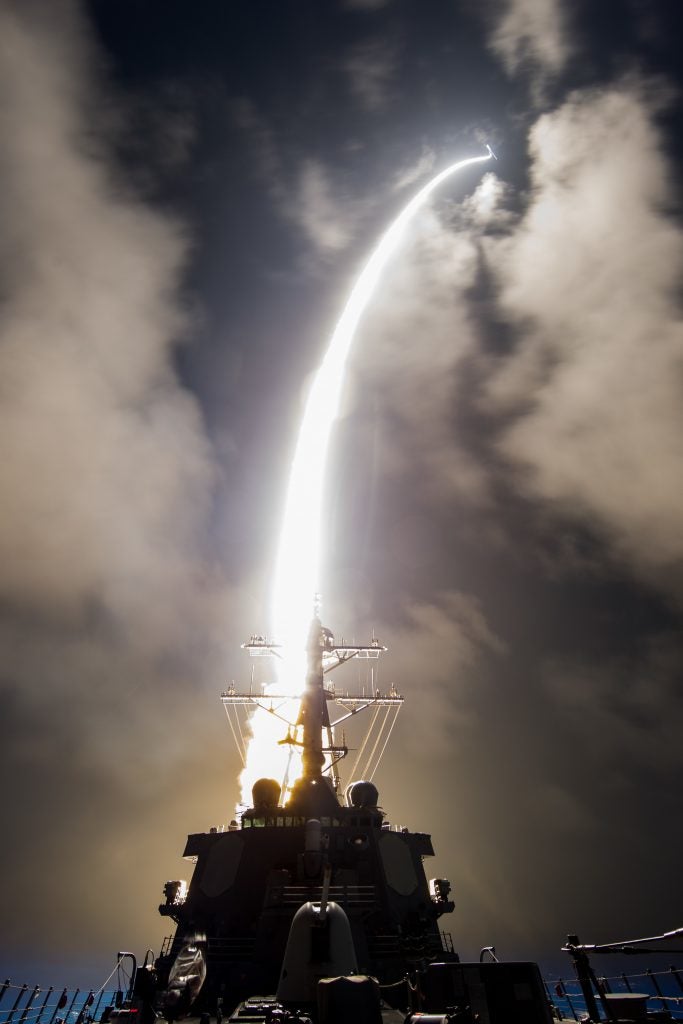MDA Selects Three Companies For Its Hypersonic Defense Missile
The Missile Defense Agency has awarded Other Transactional (OT) Agreements to Lockheed Martin, Northrop Grumman, and Raytheon Missiles and Defense for its Glide Phase Interceptor (GPI). The system is meant to defend U.S. assets against regional hypersonic weapons.
The Glide Phase Interceptor is the follow-on program to the MDA’s Regional Glide Phase Weapon System (RGPWS) program that began in December of 2019. The primary task of RGPWS and now GPI is the interception and defeat of Hypersonic Glide Vehicles (HGV), which are a type of weapons that do not fly a ballistic arc trajectory as regular ballistic missiles do, they are boosted by rockets into the upper atmosphere where they transition into a flight path that’s hard to predict due to the glide vehicle’s ability to change its heading in what’s known as a “cross-range divert” capability. GPI like its predecessor is going to be compatible with the U.S. Navy’s Aegis Weapon System (AWS) which will allow it to launch out of the MK.41 Vertical Launch System fitted on the Arleigh Burke-class destroyers and Ticonderoga-class cruisers.

During a Department of Defense press briefing on the FY22 budget, Vice Admiral Jon Hill, director of the Missile Defense Agency, spoke about what the focus of the RGPWS was, which he explained at the time was science and technology (S&T). The director also explained the agency’s sudden transition from the Regional Glide Phase Weapon System to the Glide Phase Interceptor. “We are risk-reducing and maturing technologies to operate there – things like seekers and coatings and materials for operating in that area, propulsion techniques, divert techniques. That was the focus of that and it was a much longer term. it wasn’t set for transition into a firm development program so that would have delivered something for hypersonic defense in the glide phase out in the ’30s” said Jon Hill. He also noted:
“So when you talk about that change from the Regional Glide Phase Weapon System into, now, the Glide Phase Interceptor program, for us to accelerate and deliver something faster — because that threat exists today, as you know — we have the terminal system, the Sea-Based Terminal which is in a state of evolution that’s got more increments coming downstream to get even better at what it does, but we want to engage further back into the trajectory, into the glide.”
The GPI is the third program of its kind from the MDA following the RGPWS and the (Hypersonic Defense Weapon System) HDWS, which according to MDA looked at “concept studies to understand both kinetic and non-kinetic opportunities against hypersonic threats.” These concepts were further funded and carried over into RGPWS for further technological maturation. These past efforts highlight the major initiatives that have been ongoing within the DoD to deal with emerging hypersonic threats.

During his testimony to the Senate Armed Services Committee, Jon Hill explained that the Navy currently fields a hypersonic defense capability in the form of the Standard Missile 6, which he stated can carry out terminal stage interception of hypersonic missiles. The present emphasis of the Glide Phase Interceptor, as the name implies, is to intercept hypersonic missiles in the glide phase of their flight. This would allow for an interception at distances farther out than the current hypersonic defense capability fielded by the Navy.
Another issue posed by hypersonic glide vehicles is their ability to decrease warning time and evade detection during their flight by flying below the sensor horizon and maneuvering. As such, they pose significant challenges to the defending ship, these moments of sensor coverage gap lead to what’s known as “track error propagation”. The director highlighted this issue during an event at CSIS on the MDA’s FY22 Budget:
“With the advent of the hypersonic threat and even our cruise missile threats, it’s really more about dealing with that maneuver in the atmosphere. And if you don’t have the sensor coverage because they’ve maneuvered out of your sensor coverage, then it becomes a track propagation problem. And what that means is the uncertainty in that flight path, and are you ready to engage something or you’re uncertain in the track?”
The MDA plans to overcome these issues by leveraging space-based sensors, such as the agency’s Hypersonic and Ballistic Tracking Space Sensor (HBTSS) which will feed fire control quality track information to ships and other defensive systems. The first HBTSS satellites are due to launch in 2023, the agency has awarded bids to two contractors which will both launch their systems into orbit for demonstrations. The agency released a video this year demonstrating how HBTSS and GPI will work together to overcome the sensor gap issue while also engaging threats at distances farther away than currently possible.

In response to questions from OVD about the GPI timeline, the MDA has said it expects the GPI to be fielded within the later part of the decade as opposed to the RGPWS which would have taken longer. The timing in these programs is rather crucial because the hypersonic threat exists today, systems such as the DF-17 are in operationally with China’s People’s Liberation Army Rocket Force and other systems such as the Tsirkon are in testing with the Russian Navy.

